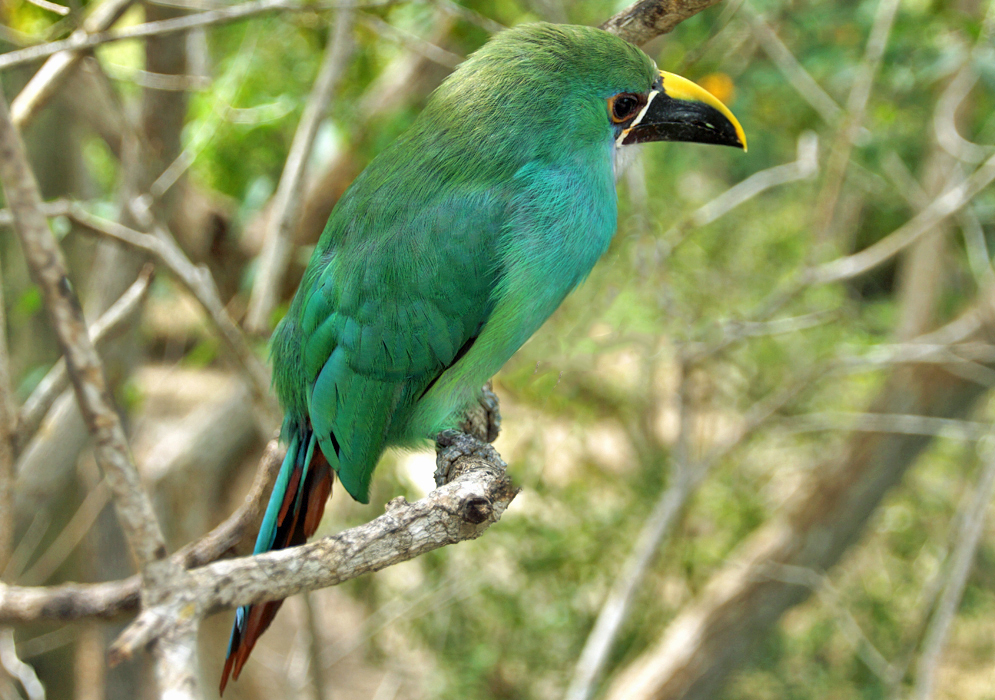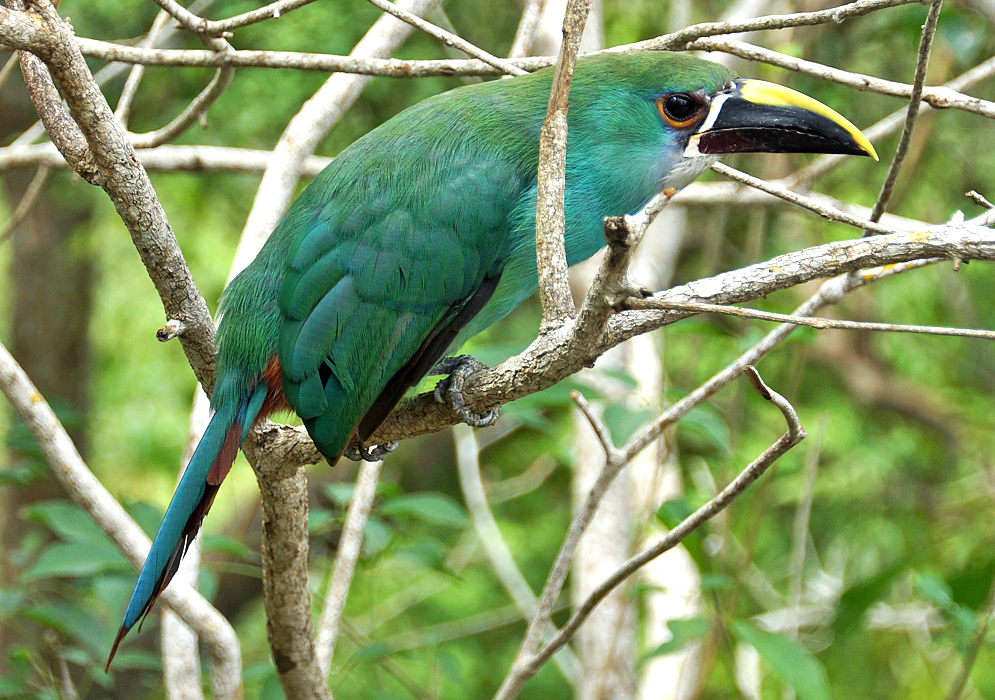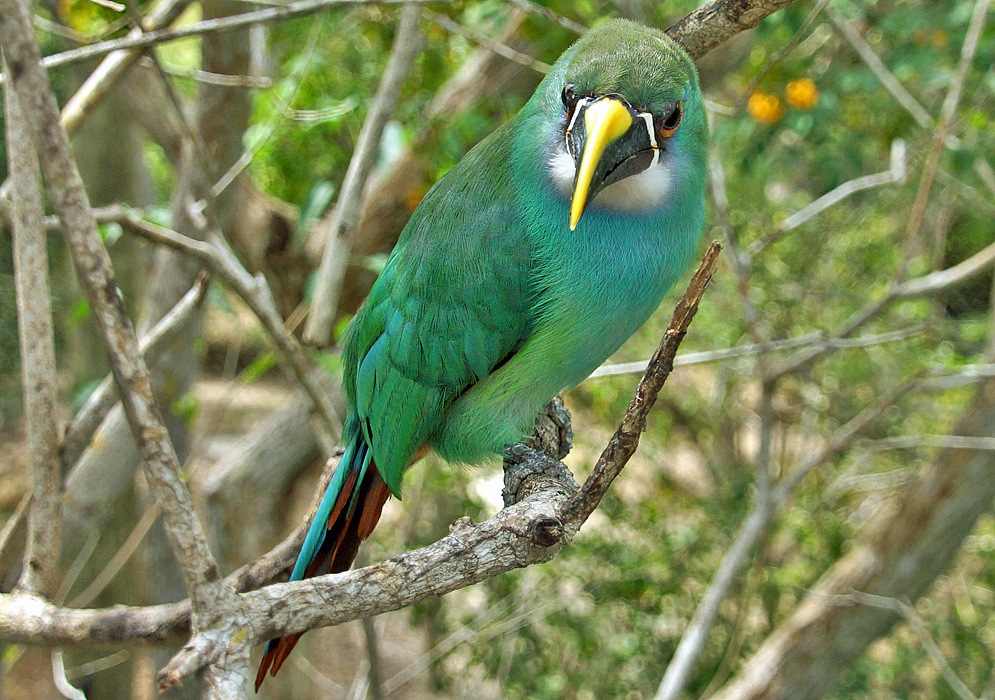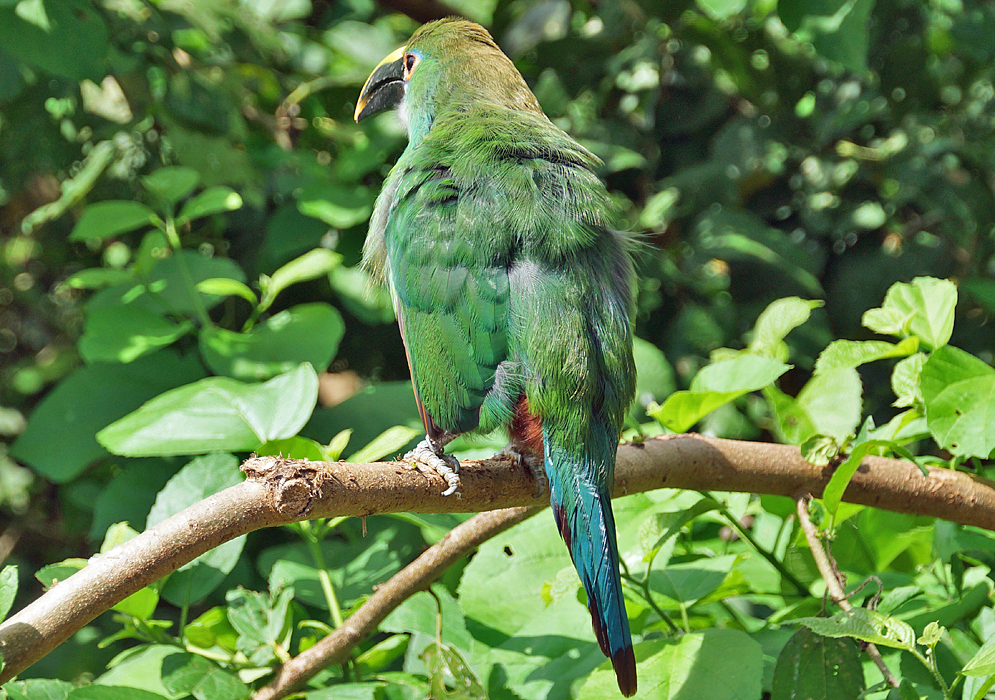This post has 11 Simple Fields-fields attached. Show fields.

The Emerald Toucanet, is a member of the toucan family, Ramphastidae. This species is native to the neotropical regions of Central and South America, with its range stretching from Mexico through to Nicaragua. They are most abundantly found along the eastern coast of Central and South America, particularly in the southern mountainous areas extending down through Costa Rica and Panama into the northernmost part of Venezuela. This bird is distinguishable by its bright plumage and large bill, a characteristic feature of toucans. Adults measure between 11 to 15 inches in length and weigh around 5.3 to 8.5 ounces. Both sexes exhibit similar coloration, though females are generally smaller and have shorter bills. The bill of the Emerald Toucanet is quite distinctive, with a black mandible, a yellow maxilla with a black patch near the nares, and a white vertical strip at its base. Their predominantly green plumage, with lighter shades below than above, helps them blend seamlessly into their forest habitat. Variations exist among subspecies in terms of size, coloration, and plumage patterns. Emerald Toucanets inhabit higher elevation cloud forests, typically in Mexico, Costa Rica, and Panama. Interestingly, they have recently expanded their range to include lower elevation rainforests. They adapt to living at elevations ranging from approximately 3,000 to 10,000 feet and undergo vertical migration within these ranges. Their small size, with an average length of about 11 3/4 to 13 inches and a weight of approximately 5.3 to 5.7 ounces, makes them the smallest among toucans. Their vibrant beaks and green feather coloration, with accents of whites, grays, and reddish-browns, enable them to blend well with the tree canopy. An interesting aspect of their mating ritual is “bill fencing,” a form of sparring that can become quite aggressive. Nesting involves the appropriation of previously excavated tree holes, which are then modified to suit their needs. Both parents share responsibilities in incubating the eggs and caring for the young, though they never occupy the nest simultaneously. Chicks are born altricial (underdeveloped) and take about 40 days to develop full plumage and start flying. Emerald Toucanets are social birds, often seen in pairs or small flocks of up to about eight individuals. They cover large territories daily in search of food and roost in trees, perched on branches. The Emerald Toucanet is classified as a species of 'Least Concern' by conservation authorities.













